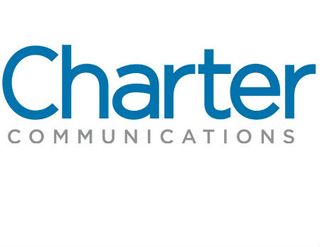Small Cells to Play Big Role in Charter’s Mobile Future

Charter Communications plans to center its coming mobile and wireless strategies on an approach that will increasingly lean on a network of small cells that taps into both unlicensed and licensed spectrum.
“Eventually we’ll transition from a WiFi-first MVNO to a small cell-first MVNO,” Craig Cowden, SVP of wireless technology at Charter, said Thursday during a CableLabs-hosted webinar that focused on a new “Bandwidth Report” technique that aims to position cable’s DOCSIS networks as a viable backhaul platform for 4G and future 5G-based small cell deployments.
RELATED: CableLabs-Cisco Trial Successfully Extends Bridge Between DOCSIS and LTE
Charter plans to launch a mobile service later this year that uses its MVNO agreement with Verizon and the MSO’s own WiFi network.
“We’re wholesaling network capacity from a wireless carrier for the broad umbrella coverage of mobility service, but we want to put as much of our traffic onto our own infrastructure as possible,” Cowden said. “We want to put as much traffic onto our WiFi infrastructure as we can.”
That approach ties in tightly with Charter’s already stated “inside-out” strategy, which is on the opposite end of the mobile industry’s outside-in focus of building a macro architecture from the outside and then increasing their penetration indoors.
“We want to build our infrastructure from within the home and then opportunistically build outdoors, where there is traffic density to justify that build,” Cowden said, noting that about 80% of wireless traffic takes place inside homes and offices.
Multichannel Newsletter
The smarter way to stay on top of the multichannel video marketplace. Sign up below.
Though unlicensed WiFi will play a big role in that strategy early on, Charter will be looking to expand on that by using small cells that tap into licensed spectrum.
"We will first start with 4G small cells,” he said. “And then as 5G technology develops, we'll look at that as well…We believe we can offer a superior connectivity experience.”
And Charter will be looking at various spectrum options, including low frequency bands, as low as 600 MHz as well as millimeter wave.
RELATED: Charter Puts Wireless Broadband to the Test (subscription required)
Cowden said Charter is “particularly interested” in the Citizens Broadband Radio Service (CBRS) 3.5 GHz band, which is being set up as a shared environment for incumbents users (like the U.S. Navy) as well as licensed (Priority Access License, or PAL) and unlicensed (General Authorized Access, or GAA) access. About 70 MHz of the 150 MHz in that band is being earmarked for the licensed PAL pool.
The FCC is working on rules for that band and decisions that emerge will help to determine how it will be rolled out and impact how aggressive cable operators and others might pursue using it.
“Charter is certainly looking at that [CBRS] as a potential small cell technology that we would deploy both in the home and outdoor,” Cowden said.
RELATED: Comcast Wants to Test CBRS in Philly
He also talked up how the industry’s widely distributed wireline networks are well positioned to support a pervasive small cell infrastructure.
HFC “is an excellent vehicle for that because it provides power, right of way and backhaul for all of that small cell radio equipment,” he said. “Whether we're talking inside the home or outside the home, we believe cable is going to be the first truly scalable fixed mobile convergence platform.”
But in order to make that work across a DOCSIS network, operators need a low-latency solution, he stressed, referencing the recent BWR work that’s being done to close that gap.
